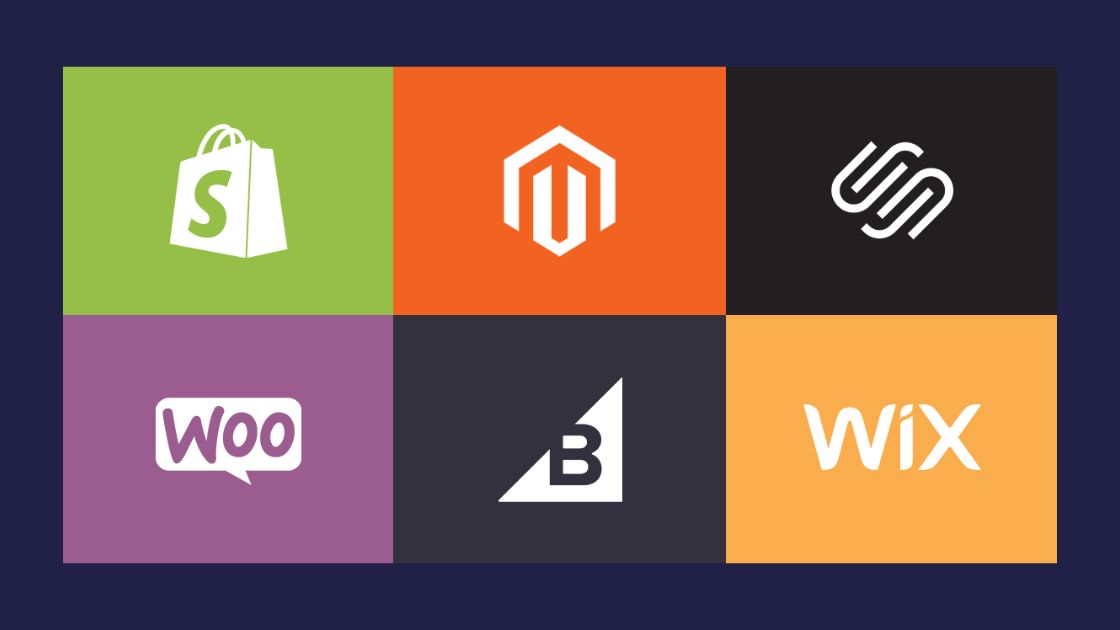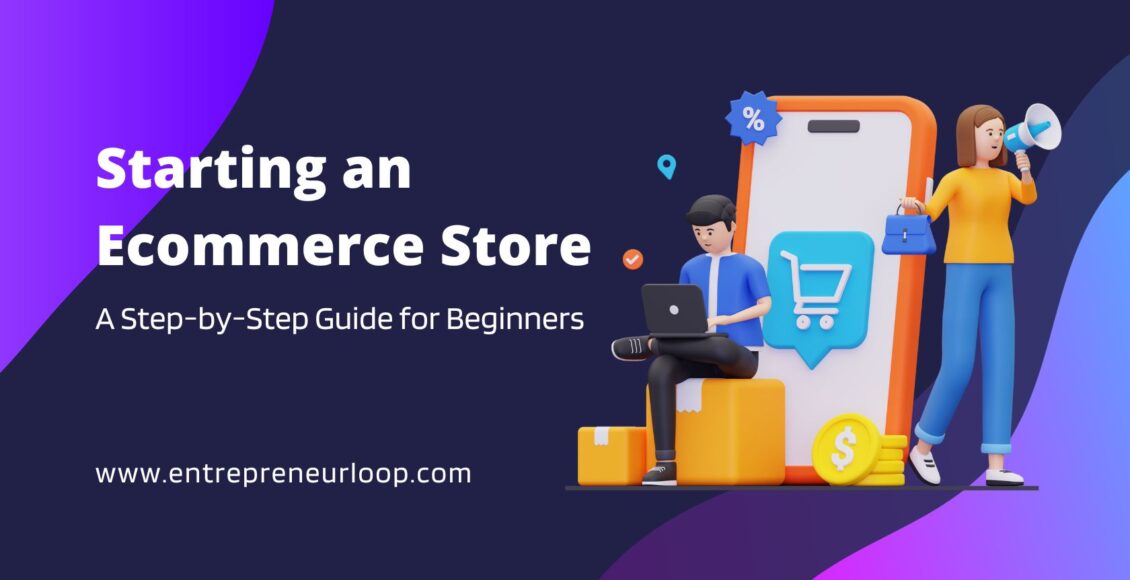Starting an Ecommerce Store: A Step-by-Step Guide for Beginners
Hey there future entrepreneur! If you’re reading this, you must be excited about taking your business online. Creating an e-commerce store can seem daunting at first, but don’t worry – starting one is way more achievable than you think. I’m going to walk you through the entire process in this no-fluff guide.
By the end, you’ll know exactly what steps to take to build a successful online business from the ground up. We’ll cover everything from choosing your perfect product to setting up an amazing online storefront. I’ll also share all my favorite tools and strategies for attracting tons of customers.
Are you ready to get started on your ecommerce journey? Then let’s dive right in!
Understanding the Ecommerce Business Concept
Ecommerce allows selling goods and services online through websites and apps. Some key aspects include:
- Online storefront – Platforms like websites, mobile apps for showcasing products.
- Inventory management – Tracking stock levels, orders, shipments effectively.
- Payments processing – Integrating payment gateways for cards, wallets, etc.
- Shipping and fulfillment – Timely order delivery through shipping partners.
- Customer service – Support through email, live chat to resolve issues.
- Marketing – Promoting the store online through various channels.
Step 1: Identifying Your Product or Service

When starting out, focus on a niche you’re truly passionate about and have relevant skills or experience in. Some booming categories today include clothing and accessories, beauty and personal care, health supplements, toys and hobbies, consumer electronics, digital products and services etc.
Research domains with steadily growing demand through news reports and industry analyses. Evaluate the competition intensity, customer base size and purchasing trends within potential niches. Identify USPs your offerings can bring to selected categories like unique designs, formulations, value propositions and more. Consider end-to-end fulfillment factors also while finalizing product ideas.
Step 2: Market Research and Competitor Analysis

Thorough pre-launch market research and competitor benchmarking is crucial. Sources for industry data include Google Trends, industry association reports, journals and surveys. Study category size and projected growth, customer demographics, seasonal spending patterns through secondary research.
Create a list of 3-5 most prominent competitors in your identified niche. Analyze their websites closely – USPs highlighted, pricing strategies, bestselling items, branding themes used, payment and shipping options provided, key success marketing tactics deployed etc. Track their organic traffic and social media engagement over time through websites like SimilarWeb.
Note gaps in competitor approaches versus customer needs. This helps profile target audiences accurately and develop differentiated value propositions. Research also provides critical inputs for financial projections and marketing strategies later on.
Step 3: Developing a Business Plan

A detailed business plan formalizes the vision and acts as a roadmap to success. Key sections include an executive summary highlighting the unique selling proposition. Provide details about the founding team, management qualifications and advisors/mentors onboard if any.
Elaborate on the target product categories, USPs of initial offerings, customer segments analysis backed by market research findings. Define specific, measurable business goals over 1-2 years with timelines.
Financial projections should cover startup capital requirements with detailed expense breakups, revenue assumptions based on competitor analyses and marketing strategies, profit-loss and cash flow projections.
Outline operational processes covering inventory management, order fulfillment pipelines, customer support frameworks, partnerships for scalability. Identify technology platforms and requirements along with associated developmental and maintenance costs over phases.
Clearly define marketing strategies with tactics, timelines and budgets planned across channels like SEO, social media, affiliations, influencer marketing etc. Refine the plan based on expert feedback and validate revenue assumptions wherever possible. The plan acts as a crucial reference document.
Step 4: Choosing an Ecommerce Platform

Major platforms include:
- Shopify: With monthly plans starting at $29, Shopify is one of the easiest and quickest to set up on. Features intuitive admin interfaces, robust app ecosystem, strong payment processing support. Themes provide extensive customization capabilities.
- WooCommerce: Free and open-source,WooCommerce seamlessly integrates ecommerce into self-hosted WordPress websites. Highly customizable through plugins and extensive developer community. Requires technical expertise for setup.
- Magento: Used by large enterprises, Magento offers high configurability and scalability through its extensive feature-set. However, it has a steeper learning curve and requires experienced developers for implementation and management. Monthly hosting starts around $150.
- BigCommerce: Template-based store creation provides drag-and-drop customizations. App integrations, marketing tools, ease of use make it well-suited for growing DTC brands. Comes at $29.95 per month upwards.
Evaluate features and pricing to select the best fit. Custom development is also an option for large budgets.
Step 5: Building Your Online Store

Build the storefront with sections, navigation, pages on the selected platform. Integrate payment gateways like PayPal, Stripe. Configure shipping & tax rules with plugins. Optimize product pages with high-quality images, variations, descriptions. Test key functions extensively before launch.
Step 6: Managing Inventory and Orders

Leverage system default or third-party plugins like Drip to maintain real-time stock visibility across channels. Configure low inventory alerts and replenishment timelines.
-
Shopify offers an Inventory Management app that lets you track inventory levels, set up low stock alerts, and manage inventory across multiple sales channels.
-
WooCommerce, which is a popular plugin for WordPress, also has inventory management tools built-in, including stock tracking and low stock notifications.
-
BigCommerce provides an Inventory Management tool that lets you manage and track your stock levels, and even set up automated reordering when your stock reaches a certain threshold.
Choose from carriers like FedEx, DHL Express or other regional carriers and generate shipping labels directly within the dashboard.
Processor orders systematically – validate payments, generate invoices, pack orders fulfilling specifications, schedule pickups/drop-offs based on service level commitments. Leverage fulfillment centers for scalability during seasonal spikes or venturing into new categories requiring specialized handling or storage needs.
Step 7: Marketing Your Store

Here are some effective strategies:
- SEO: Optimize site structure, page titles, descriptions and on-page content for target keywords based on keyword research. Build high-quality, fresh blog posts regularly to engage search visitors.
- Social Media: Advertise creatively on Facebook/Instagram highlighting new launches, limited period deals. Post engaging, visual content consistently through organic posts also.
- Email Marketing: Welcome series, targeted discount promotions for re-engagement based on customer behavior through acquisition and retention emails.
- Affiliate Marketing: Partner with popular lifestyle/niche bloggers and influencers through performance-based commissions.
- Influencer Marketing: Collaborate with micro-influencers in the target niche by gifting products in exchange for reviews.
- Analytics: Google Analytics for traffic and conversion insights.
- Retargeting: Remarket to website visitors who abandon carts or watched specific products through Facebook/Google ads.
Closely monitor metrics like CTRs, conversion rates to optimize ad budgets and refocus tactics over time based on insights. Consistency in engagement is the key to sustained visibility.
Step 8: Growing Your Business Sustainably

Focus on building a loyal customer base through quality products backed by excellent post-sales support. Invest in detailed expertise about offerings to handle queries efficiently through live chats and emails.
Strengthen brand identity and trust through company blogs, social profiles while exploring new networking platforms also. Refine pricing strategies to maximize margins.
Track sales funnels, top performing regions/countries, bestselling categories and seasonal trends through reports and dashboards to refine offerings accordingly enhancing average order values.
Continuous A/B testing and personalization helps improve user experiences and retention. Outsourcing redundant operational tasks frees up time for new product innovations and strategic initiatives. As the business grows, expand fulfillment and technological capabilities to enter untapped global markets as well through cross-border shipping integrations.
Conclusion
With the right strategy and execution, ecommerce provides a scalable way to build a successful business. Commit to continuous learning, optimization and embracing challenges on the journey. Applying these fundamentals and latest industry best practices can help launch a thriving online venture.

